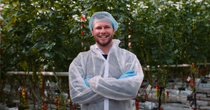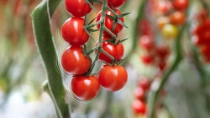Media
Illuminating the future: The shift to LED in tomato cultivation
By Erwin de Kok
The tomato cultivation industry has faced numerous challenges over the years, ranging from soaring energy prices to the devastating impact of diseases like the rugose virus. However, there is a renewed sense of optimism sweeping through the industry, thanks to the stabilization of energy costs and advancements in technology and genetics.
As a Sales Specialist in tomato at BASF | Nunhems, I have had the privilege of witnessing transformative trends in tomato cultivation across Europe. Among these trends, the adoption of LED lighting stands out as a game-changer, driven by the urgent need for more sustainable and efficient farming practices.
LEDs have emerged as a major trend in tomato cultivation, gaining momentum about three years ago when the surge in energy prices compelled growers to reevaluate their strategies. These energy-efficient lighting systems not only contribute to lower energy consumption but also reduce heat output, making them a perfect fit for the precise environmental control required in tomato cultivation. What truly sets LEDs apart is their versatility in supporting a wide range of light recipes tailored to the specific growth stages and needs of tomato plants. This level of precision in controlling the light spectrum ensures that tomatoes can be grown year-round, resulting in improved yield and superior quality.
.png)
By implementing LED lighting at an early stage in our genetic research, we aim to provide growers with the tomato varieties they need to maximize the benefits of innovative lighting concepts, ultimately helping them achieve optimal production levels while reducing costs.
The benefits of LEDs extend beyond energy savings. They are incredibly durable and have longer lifespans compared to traditional lighting systems, reducing the need for frequent replacements and cutting down on maintenance costs. Moreover, LEDs represent a significant step forward in reducing the carbon footprint of indoor farming. Their lower energy requirements alleviate strain on power grids and contribute to lower greenhouse gas emissions, aligning with the broader goals of sustainability in agriculture.
Countries like the Netherlands have been at the forefront of this LED revolution, which is now rapidly expanding. From the United Kingdom to Switzerland and even Spain, various countries are experimenting with LED applications in both small-scale trials and large-scale operations.
At BASF | Nunhems, we are fully committed to integrating these developments into our breeding and cultivation strategies. By implementing LED lighting at an early stage in our genetic research, we aim to provide growers with the tomato varieties they need to maximize the benefits of innovative lighting concepts, ultimately helping them achieve optimal production levels while reducing costs. This commitment also reflects our dedication to sustainability, ensuring that we can meet the demands of the future without exploiting our planet's resources.
Get in touch with us
Please leave your contact details below our get in touch with our experts if you are interested in learning more about our offerings.

